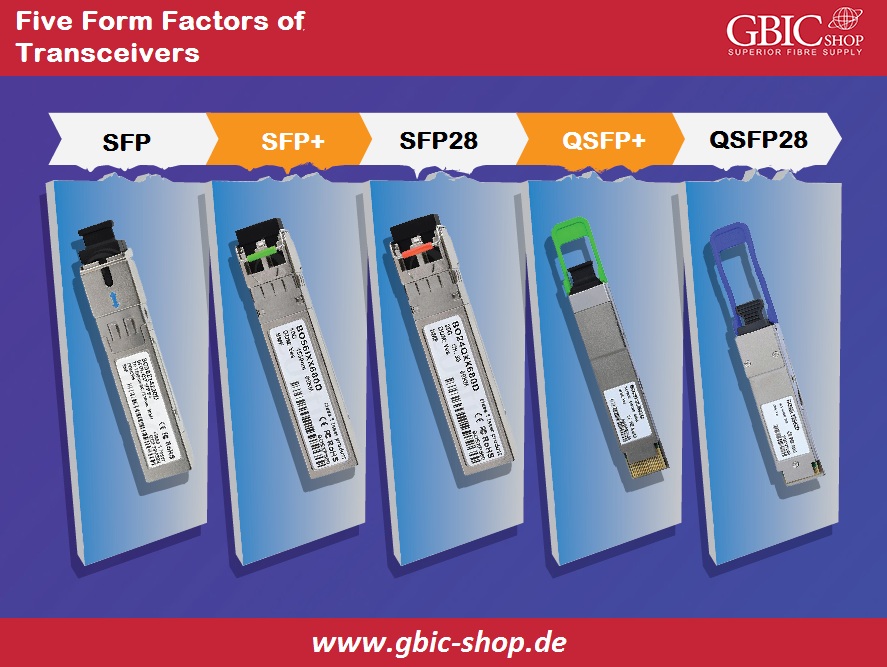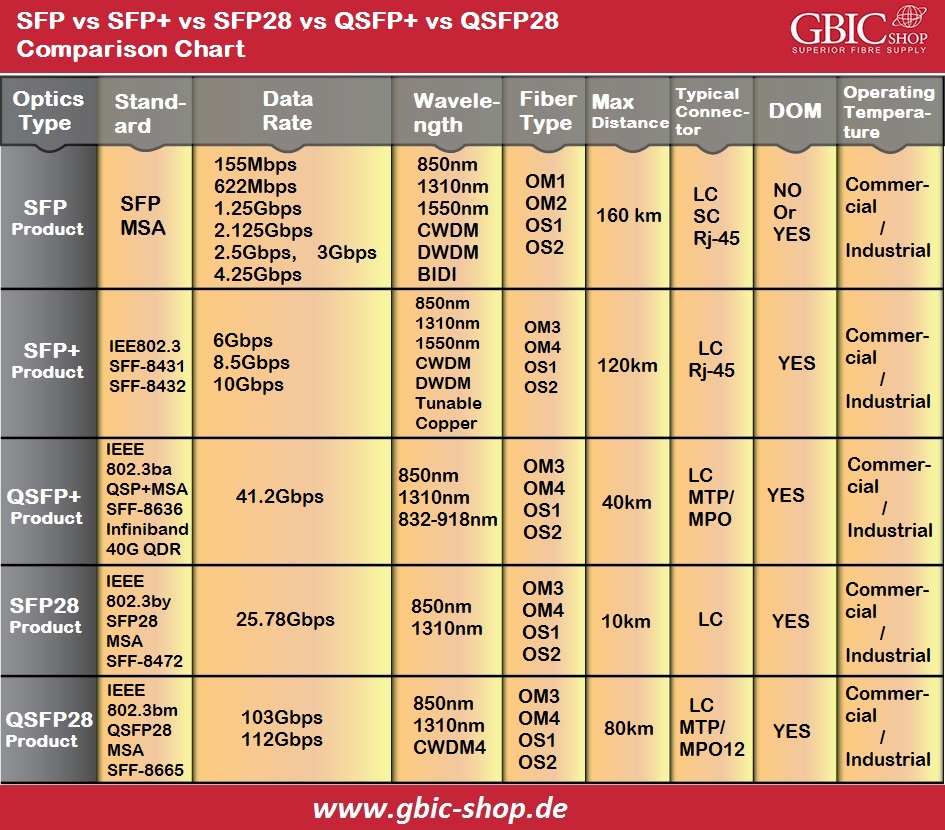We have five form factors: SFP, SFP28, SFP+, QSFP28, and QSFP. They are significantly more in demand than the rest in creating fiber optic connectivity. However, how can we select the right one between these form factors? How can we differentiate them? We choose the correct connector that works precisely at a cost-efficient point for building a network.

Comparison Chart of Different Form Factors:

A Comparison between SFP and SFP+:
SFP and SFP+ possess similar sizes with different compatibility and speed. We use SFP+ in 10GbE implementations, whereas SFP is for 1000BASE or 100BASE implementations. SFP follows the standards of SFP-8472 and IEEE802.3, whereas the base of SFP+ is on SFP-8431. SFP+ ports take on SFP fiber optics at a decreased speed of 1 Gigabyte per second. Moreover, we cannot plug an SFP+ optical transceiver into an SFP port, and if we do, there can be damage to the port or product. Usually, SFP+ is more costly than SFP.
A Comparison between SFP+ and SFP28:
SFP+ has mainly a connection to 10 Gigabit, whereas SFP28 has an association with 25 Gigabit links commonly. They utilize a similar form factor, and the bonds of SFP+ and SFP28 connectors are mating adaptable. Therefore, SFP28 will operate SFP+ fiber optics at a decreased speed of 10 Gigabytes per second. Moreover, if we can set up a port for 10 Gigabit transmission, SFP+ optical modules will operate well with the SFP28 port on a switch network; otherwise, the SFP+ optical modules cannot operate.
A Comparison between SFP+ and QSFP:
The main difference between SFP and QSFP is the quad form. QSFP is a developed form of QSFP to provide four 10 Gigabytes per second channels supporting 10GbE, 10 Gigabit Fiber Channel, or Infini-Band, which supports 4x10 Gigabit cables and stacked networking patterns that get better output. QSFP can take the place of 4 standard SFP+ optical transceivers, causing significant port density and general system price savings above SFP+.
A Comparison between SFP28 and QSFP28:
QSFP28 and SFP28 optical transceivers adopt different working principles and sizes. SFP28 favors just one channel with 25 Gigabytes per second, whereas QSFP28 favors four separate lanes, and each of them is 25 Gigabytes per second. We can use both of them in 100 Gigabit networks. However, we can apply SFP28 in the form of QSFP28 to the breakout solutions of SFP28.
Summary:
Understandably the primary force behind the development of fiber optic transceivers is the requirement to get the highest bandwidth rates with a small form factor. Presently, small form factor dense networks are a consistent necessity. After realizing them, you have to think about transmission range, network traffic, and future-proof network requirements for making the correct selection.
 English
English
 Deutsch
Deutsch
 Espaniol
Espaniol










